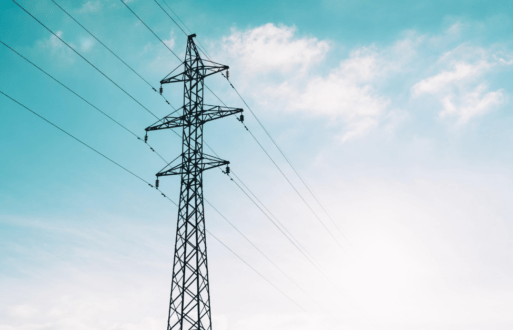Protocols, operating practices, and other market operating rules in our electric energy markets are not static; they change in response to new technology. They are also constantly evolving to make markets more efficient. A stakeholder process introduces initiatives to make these adjustments and changes in most markets. Market participants discuss, propose, compromise, and eventually form a consensus on new approaches. It is hoped the changes eventually made have positive consequences for the market and its participants.
Such is the case for improving the Responsive Reserve Service (RRS) in the ERCOT market. RRS is a type of ancillary service required to maintain grid reliability and is also commonly known as Spinning Reserve. Since the RRS debuted with the original ERCOT Zonal market, there have been many changes in technology, then continued with the transition to the Nodal Market in December of 2010. As a result, in early 2018, a major update to the service was proposed with Nodal Protocol Proposed Revision Request (NPRR) 863.
Let’s look at what this revision sought to improve and where it stands now.
Why is responsive reserve service used?
Many know of RRS as an ancillary service that provides 10-minute energy deployment in response to significant generation losses of resources on the system. For decades, the ERCOT market was dominated by thermal generating resources (nuclear, coal, natural gas), balancing demand on a minute-by-minute basis. The loss of a major coal or nuclear unit on the system was a major risk to keeping frequency deviations in a safe range. ERCOT calculated the RRS needed to provide this reliability and procured it daily from generators. Loads ultimately bore the costs of this service on a load ratio share basis.
Generators offered RRS into the Day-Ahead Market. Those selected to provide RRS were paid the Market Clearing Price for Capacity (MCPC) for RRS, denominated in dollars per megawatt per hour, for each hour the unit will be carrying the RRS obligation in real-time. If RRS was deployed in real-time, this capacity was released to deployment, and the unit earned the Real-Time Market Clearing Price for Energy (RTMCPE) for energy thus generated, in addition to the MCPC.
Many don’t know that all online thermal generators, whether providing RRS or not, are required to provide Primary Frequency Response (PFR) to the grid. The turbine/generator set must demonstrate its capability to respond to changes in frequency within a specific range (Dead-band) and changes to voltage (Droop) to inject power into the grid within moments of a large frequency perturbation. This process was to help “prop up” frequency after a major unit trip while the 10-minute RRS energy ramped up. This format is different from Up-Regulation Service (URS), which is used to fine-tune frequency within a narrow band. A trip of a primary power unit can cause such a significant frequency perturbation that URS cannot arrest the decay quickly enough.
What’s the issue with RRS and primary frequency response?
As mentioned, all online generators must provide PFR whether carrying an RRS obligation or not. There are testing and reporting requirements for PFR and reliability compliance implications should a unit fail its PFR requirement. In addition, generator owners must invest capital into the systems to keep them up to date, and maintenance expenses are incurred in maintaining their compliance. Therefore, PFR was seen as an uncompensated service provided to the grid with financial costs and compliance risks.
Since there were no financial incentives not to use PFR to help regulate frequency in the grid, it was essentially a “free service.” With all things that are “free,” it tended to be overused. Market participants argued rightfully that over-reliance on the “free” PFR tended to affect how pricing for other ancillary services was formed.
Finally, the RRS/PRS requirement proved to be a barrier to entry for new technologies in the market, specifically loads wishing to provide RRS. Many can meet the 10-minute energy requirement but not the PFR service.
What solutions were developed to improve RRS?
In February 2019, the ERCOT Board approved a protocol revision to address the RRS issues. This new protocol provided several changes to the market, including:
- It established a new Ancillary Service, ERCOT Contingency Reserve Service (ECRS). This service essentially separates some of the 10-minute Responsive Reserve into a separate service with no PFR requirement. ECRS can be provided by loads and is intended to complement and reinforce the frequency-triggered RRS provided by units capable of doing so.
- The protocol revision allows generators not actively providing RRS to widen their PFR Dead-bands to lower maintenance costs and compliance risks. The changes to a unit’s Dead-band must be accomplished by updating its Resource Registration data.
- It changed technical requirements such that any unit operating in synchronous condenser fast-response mode can qualify for RRS (not just hydro units). This requirement is intended to make the service more technology agnostic.
When will the protocol revision be implemented?
The introduction of ECRS and associated changes required adjustments to over 65 other sections of the ERCOT protocols, ranging from adjustment to Fast Frequency Response, Load Frequency Control, operations in the Day-Ahead Market, and many other areas. These changes involve developing and testing software and management processes and impacting ERCOT control systems and the systems operated by market participants.
When the ERCOT Board first approved the changes, it called for the implementation of the FFR-related language no earlier than Jan. 1, 2020, and the ECRS language no earlier than Jan. 1, 2022. As a result, much work has been done at the ERCOT and the market participant levels to prepare.
How will the ERCOT protocol change affect the market?
This change to the ERCOT protocols will have wide-reaching effects:
- Improved reliability: With the introduction of ECRS, it is expected that more resources, both on the load and generation side, will participate in the RRS ancillary service market, effectively increasing the ERCOT reserve margin.
- Price formation: The move away from using PFR to supplement frequency control in favor of services for which the price is determined in the open market results in cleaner, more transparent price formation.
- Clear economic signals: The economics related to investments in controllable loads will be improved since these resources can efficiently provide this ancillary service. This process will result in a better investment climate for new demand-side resources such as Distributed Energy Resources (DERs) and Virtual Power Plants (VPPs).
As mentioned initially, market rules must adapt and change as technology improves and electricity markets change and grow. The new rules for ECRS in ERCOT are an example of this evolution. The result will be lowering entry barriers to the market for new technologies, reducing compliance risk for some generators, improving price formation for ancillary services, and better tools for ERCOT to use for managing its 75 GW region.
If you’re interested in other ERCOT-related topics, check out my blog post, Energy Storage Integration in the Texas Power Market.






